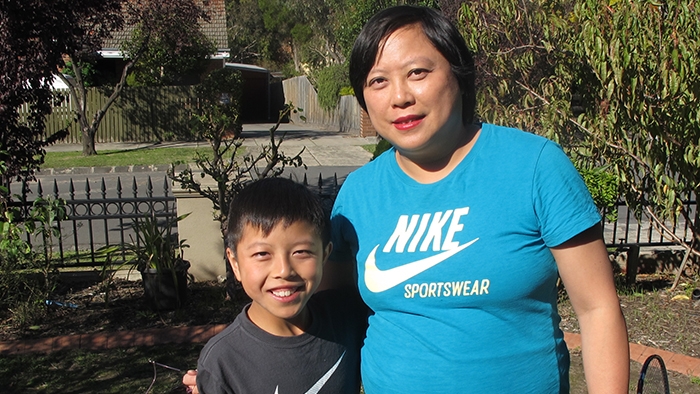-
Over 1.7 million Australians have diabetes and 280 new cases develop every day. 85-90 per cent of the epidemic is type 2 diabetes, and over 2 million Australians have pre-diabetes, a condition in which blood glucose levels are higher than normal, putting them at an increased risk of developing type 2 diabetes.
The good news is that we can prevent or delay this progression from pre-diabetes to type 2 diabetes through sustained lifestyle change programs.
“We have strong evidence that over half of cases of type 2 diabetes developing from pre-diabetes can be prevented through sustained lifestyle changes which combine healthy eating, increasing physical activity, and obtaining and maintaining a healthier weight,” says Professor Greg Johnson, Diabetes Australia CEO.
“We have seen the state-wide implementation of a program in Victoria funded by the Victorian Government, the Life! program, which has now seen over 30,000 people access structured lifestyle change programs to prevent type 2 diabetes, and we need a National Diabetes Prevention Program to take this powerful and proven prevention to a national scale.”
For those who do develop type 2 diabetes, most will need oral medications and/or insulin injections in addition to lifestyle changes to help manage their type 2 diabetes. Self-monitoring and management is particularly important. Unfortunately, if type 2 diabetes is not well-managed then it can lead to serious health complications including heart attacks, strokes, kidney damage, blindness, limb amputations, serious anxiety and depression and more.
Preventing type 2 diabetes

-
Sign up to our weekly newsletter and receive useful health tips and insights, expert advice, offers and promotions straight to your inbox. Receive the Eat Clean recipe book FREE with 20 recipes to get you started on your healthy eating journey.
Stephanie’s story
Stephanie Jang, aged 48, was not aware that she was at risk of type 2 diabetes until her sister, who is a doctor, warned her that her weight gain around her waist was an indicator that she was at serious risk. Her waist measurement was well over the 80 cm indicator for women.
Stephanie described herself as lazy, indulging in too much chocolate and fried foods, and was mostly inactive. But after starting the Life! program, she got back to a healthier weight, got fitter through some fitness coaching, changed her diet and generally became more active.
“It took a while to see the results,” she says. “After the five-month mark I felt like I had new lifestyle patterns in place and I had a good thing going.”
Stephanie monitored her daily walking with a pedometer and after one month she increased to 13,000 steps per day, above the healthy target of 10,000 steps. As her diet improved, she says her skin started to clear and she began to look younger. “I used to pass as mid-forty, but now I pass as under forty,” she says with a smile.
She was also motivated after convincing her husband to be her gym buddy. She now goes to the gym three times a week and says she gets her money’s worth.
The changes of healthy eating and being active have reverberated with Stephanie’s 9-year-old son. “He used to only want Gatorade and sports drinks but now he just wants water and not too much sugar,” she says.
Her best advice to others? “Stick at it – if you don’t change everything at the start, keep at it, persevere with small changes and maintain them,” she says.
Risk factors for type 2 diabetes
There are many different risk factors and the more of these you have, the greater your risk:
- If you are inactive.
- If you smoke.
- If someone in your family (mother, father, brother, sister) has type 2 diabetes.
- If you are overweight/ obese or are carrying extra weight around your waist
- If you have pre-diabetes.
- If you have high blood pressure, abnormal blood fats (cholesterol) or cardiovascular disease.
- If you are Aboriginal or Torres Strait Islander.
- If you are from Pacific Islander, Southern European, Middle Eastern, Northern African and Southern Asian backgrounds.
- If you have had diabetes during pregnancy (gestational diabetes).
-
Eat for your eyes
Some of our favourite foods to help keep your eyes healthy.
-
How is ‘phubbing’ hurting your relationships?
Here’s how to stop phubbing and be more mindful of your phone habits, to help improve face to face interactions with your family and friends.
-
Are the winter blues real?
Simple ways to boost your mood in winter.
-
Mental fitness explained
Just as you work to strengthen your body, your mental health deserves attention and exercise too.
-
The link between stress, anxiety and jaw pain
Physiotherapist Michael Chan explains how stress and anxiety can cause jaw pain, and how to help get some relief.
-
When you can't sleep next to your partner
You love everything about them – except their sleep habits.
Subscribe to receive the best from Live Better every week. Healthy recipes, exercise tips and activities, offers and promotions – everything to help you eat, move and feel better.
By clicking sign up I understand and agree to Medibank's privacy policy





.jpg)
